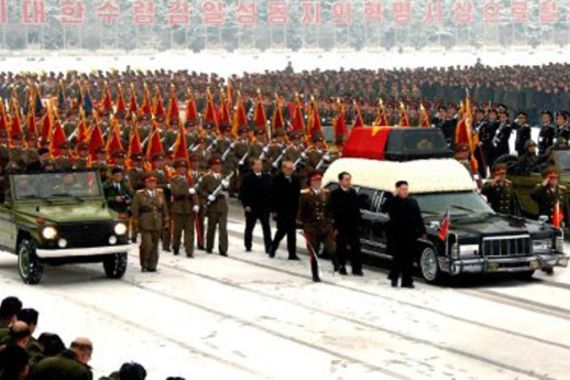
North Korea’s untested young Kim
What will the reclusive communist state look like under the rule of Kim Jong-il’s younger son, Kim Jong-un?
It was a ceremony that saw thousands of North Koreans line the streets bidding a final farewell to Kim Jong-il, fondly known to his people as the Dear Leader. He was given a military salute as his coffin was paraded through the capital Pyongyang.
His youngest son, Kim Jong-un walked next to his father’s hearse, leaving little doubt as to who the country’s next leader would be. What remains uncertain is what kind of leadership that will be.
Keep reading
list of 4 itemsBirth, death, escape: Three women’s struggle through Sudan’s war
Does Israel twist humanitarian law to justify Gaza carnage?
Vatican denounces gender-affirming surgery, gender theory and surrogacy
|
“I think in Kim Jong-un we are going to see someone who is prepared to look beyond the borders of North Korea and there may be a new page. The problem will be will the west respond?“ – Larry Jagan, an expert on Asia |
But Kim Jong-un is far from alone. The square in front of the Kumsusan memorial palace was lined with mourners, many of them from the powerful military elite.
If the intensity of the mourning was meant to be a message to the outside world, so too was the choreographed parade accompanying Kim Jong-il’s hearse.
Kim Jong-un was flanked by Ri Yong-ho, North Korea’s most powerful military leader; and Jang Song-thaek, the uncle that many analysts had expected to be his chief counsel.
North Korea’s state funeral appears to have gone as planned. Kim Jong-il has been laid to rest and the country is now entering the era of Kim Jong-un.
But just how smooth will the transition to power be for Kim Jong-un? And what will North Korea look like under the young and untested Kim?
Inside Story with presenter Hazem Sika, discusses with guests: Stephanie Kleine-Ahlbrandt, the Northeast Asia project director for the International Crisis Group; and Larry Jagan, an expert on Asia, and former news and current affairs editor for Asia BBC World Service.
|
“Kim Jung-un’s uncle has been appointed as main loyalist who is going to help him through the transition. And it was no surprise that the army chief, was also in a principle position in the cortege … I don’t think there were that many surprises and I don’t think it [the funeral] tells us much more about the succession.” Stephanie Kleine-Ahlbrandt, the North East Asia project director for the International Crisis Group |